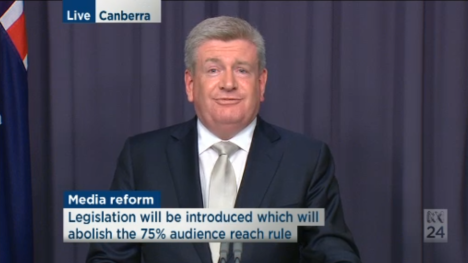Media reform bill reintroduced but uncertainty hangs over progress through the Senate
The Government has today formally resurrected the media reform bill, but significant steps towards reform could still be months away with its progress through the Senate far from certain.

Communications minister Mitch Fifield pictured last March ahead of the first reading of the media reform bill
The bill will have its first reading in the House of Representatives six months to the day it was first presented to politicians in the House under the previous Turnbull Government.
The bill, which seeks to abolish a rule preventing the merger of metro and regional broadcasters, was shelved in April when the federal election was called.


Holden is dead after next yar. They should just rebrand as Chevrolet and start bringing in Camaros, Corvettes, Silverados,Tahoes, Malibus and Impalas.